View in other NatureServe Network Field Guides
NatureServe
Montana
Utah
Wyoming
Idaho
Wisconsin
British Columbia
South Carolina
Yukon
California
New York
Wild Carrot - Daucus carota
Other Names:
Bird's Nest, Bishop's Lace, Queen Anne's Lace
General Description
Biennial with a stout taproot. Stems erect, simple or branched, 20–100 cm. Herbage glabrate to hirsute. Leaves basal and cauline, petiolate; blades lanceolate to ovate in outline, 5–20 cm long, bipinnate; leaflets deeply lobed, crowded. Umbels compound; peduncles 10–30 cm long; rays unequal, 2–4 cm long; involucral bracts 1–4 cm long, pinnate with widely-spaced, linear lobes; involucel bracts linear or 3-lobed, 4–15 mm long, ciliate. Flowers white; central flower of central umbel often purple; sepals minute; petals ca. 0.5 mm long; stylopodium conical. Mericarps elliptic, slightly compressed parallel to the commissure, 3–4 mm long; ribs with barbed prickles; oil tubes solitary in the intervals (
Lesica et al. 2012. Manual of Montana Vascular Plants. BRIT Press. Fort Worth, TX).
Diagnostic Characteristics
A similar umbellifer, Carum carvi (caraway), is distinguished from D. carota by small umbellets that are separate from each other; inconspicuous, narrow bracts below the umbel; ribbed seeds without bristles that give the odor of caraway when crushed; and glabrous leaves and flower stalks.
Species Range
Montana Range
Range Descriptions
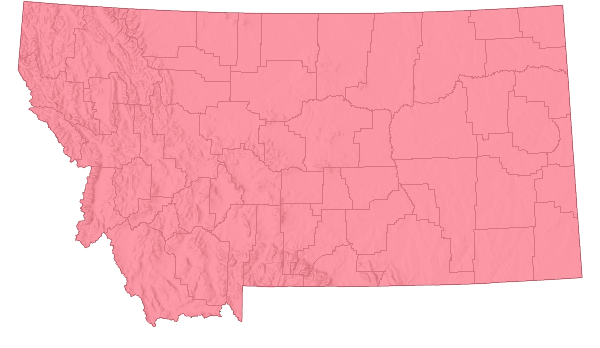
 Non-native
Non-native
Range Comments
Introduced throughout North America; native to Eurasia (Lesica et al. 2012. Manual of Montana Vascular Plants. BRIT Press. Fort Worth, TX).
Observations in Montana Natural Heritage Program Database
Number of Observations: 34
(Click on the following maps and charts to see full sized version)
Map Help and Descriptions
Relative Density
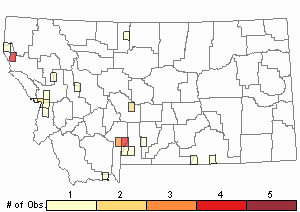
Recency
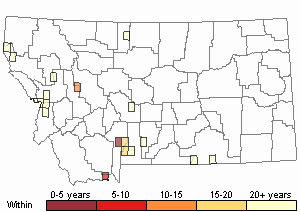
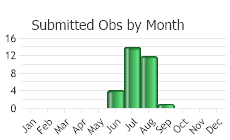
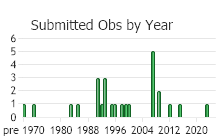
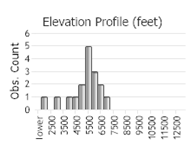 (Observations spanning multiple months or years are excluded from time charts)
(Observations spanning multiple months or years are excluded from time charts)
Habitat
Ecology
POLLINATORS The following animal species have been reported as pollinators of this plant species or its genus where their geographic ranges overlap:
Bombus vagans,
Bombus huntii,
Bombus rufocinctus, and
Bombus impatiens (Thorp et al. 1983, Colla and Dumesh 2010).
Management
Stewardship Responsibility
References
- Literature Cited AboveLegend:
 View Online Publication
View Online Publication Colla, S.R. and S. Dumesh. 2010. The bumble bees of southern Ontario: notes on natural history and distribution. Journal of the Entomological Society of Ontario 141:39-68.
Colla, S.R. and S. Dumesh. 2010. The bumble bees of southern Ontario: notes on natural history and distribution. Journal of the Entomological Society of Ontario 141:39-68. Lesica, P., M.T. Lavin, and P.F. Stickney. 2012. Manual of Montana Vascular Plants. Fort Worth, TX: BRIT Press. viii + 771 p.
Lesica, P., M.T. Lavin, and P.F. Stickney. 2012. Manual of Montana Vascular Plants. Fort Worth, TX: BRIT Press. viii + 771 p. Thorp, R.W., D.S. Horning, and L.L. Dunning. 1983. Bumble bees and cuckoo bumble bees of California (Hymenoptera: Apidae). Bulletin of the California Insect Survey 23:1-79.
Thorp, R.W., D.S. Horning, and L.L. Dunning. 1983. Bumble bees and cuckoo bumble bees of California (Hymenoptera: Apidae). Bulletin of the California Insect Survey 23:1-79.
- Additional ReferencesLegend:
 View Online Publication
View Online Publication
Do you know of a citation we're missing? Gross, K. L., and P. A. Werner. 1982. Colonizing abilities of "biennial" plant species in relation to ground cover: Implications for their distributions in a successful sere. Ecology 63(4):921-931.
Gross, K. L., and P. A. Werner. 1982. Colonizing abilities of "biennial" plant species in relation to ground cover: Implications for their distributions in a successful sere. Ecology 63(4):921-931. Lesica, P., M.T. Lavin, and P.F. Stickney. 2022. Manual of Montana Vascular Plants, Second Edition. Fort Worth, TX: BRIT Press. viii + 779 p.
Lesica, P., M.T. Lavin, and P.F. Stickney. 2022. Manual of Montana Vascular Plants, Second Edition. Fort Worth, TX: BRIT Press. viii + 779 p. Rydberg, P. A. 1971. Flora of the prairies and plains of central North America. Dover Publications, N.Y. 503 pp. 2 vol.
Rydberg, P. A. 1971. Flora of the prairies and plains of central North America. Dover Publications, N.Y. 503 pp. 2 vol.
- Web Search Engines for Articles on "Wild Carrot"





